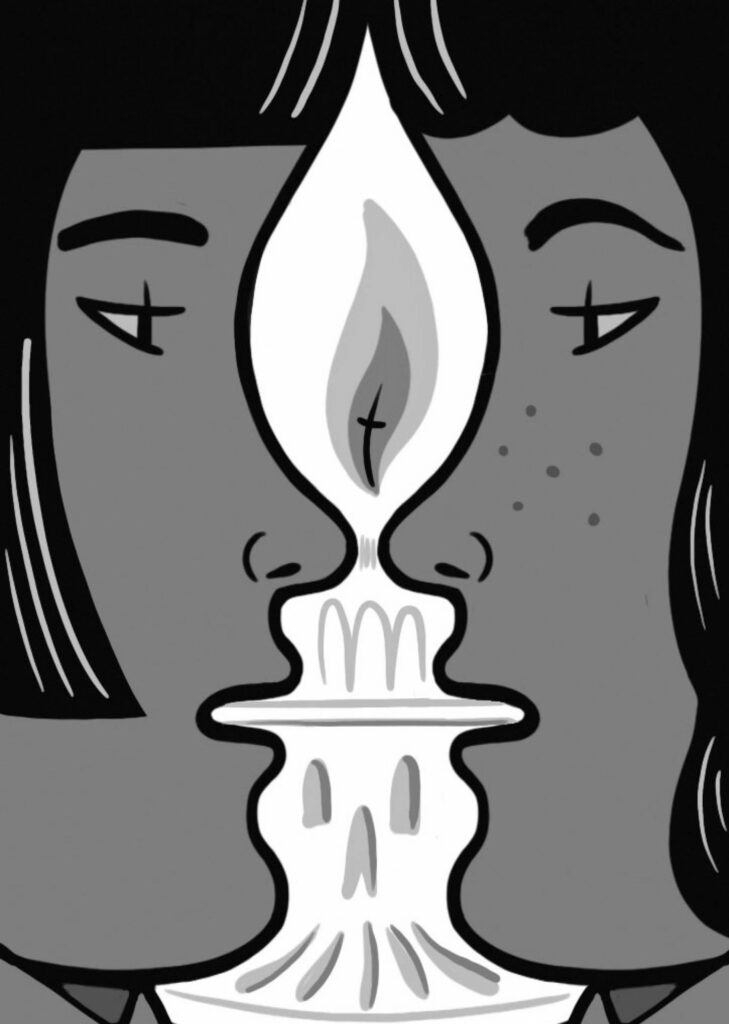What is it about girls’ boarding schools, at least as seen in novels? In Antonia White’s Frost in May, the students’ spirits at the aptly named Convent of the Five Wounds are stifled by arbitrary power and everyday cruelties. But at least no one is murdered, which is what happens at Bath Ladies College, the steaming cauldron at the centre of Susan Swan’s The Wives of Bath. The usual teenage angst and drama swirls, and a boarder named Paulie pushes the gender envelope with horrific results. There’s also a murder, this time of a Tutsi girl, in Scholastique Mukasonga’s Our Lady of the Nile. Set in a school in the Rwandan mountains in 1979, the story is a tragic prelude to the genocide of the 1990s. And, of course, there is Jane Eyre ’s Lowood, one of the first literary depictions — if not the first — of a girls’ boarding school. Amid a typhus outbreak that cuts the school’s population in half, Charlotte Brontë kills off Jane’s best friend with consumption.
Even without tragedy, isolating young girls and adolescents away from family and the outside world is a chancy enterprise that might give aspirational parents pause when they consider educational options. But there’s no denying that the pressure cooker of a boarding school can make for gripping storylines.
Ariane Lessard, a Montreal writer in her thirties, has set her second work of fiction in an institution that houses twenty-one girls and six nuns. It perches so high on a Quebec mountain that snow covers the area for almost six months of the year. When School for Girls takes place is uncertain, but there is no connection with the larger world during the depths of winter.
Lessard tells her story through the thoughts of eleven girls, in brief passages of one or two pages. At first daunting, the structure allows the individual voices to emerge and weave back and forth. Among them: Catherine, the judgmental goody two-shoes; Ariandre, the loner and would-be writer; and the nearly mute Diane. The girls have their hierarchies, their crushes, their enmities and sexual awakenings. Laure and Dame Dread, the caretaker nun, meet secretly in a shack. Corinne and Colette play an advanced form of footsie in Colette’s bedroom. Ariandre threatens to kill Annette and bury her under the paving stones in the inner courtyard if she doesn’t stop spying on her.

Confronting an overriding sense of doom
Jamie Bennett
But more or less normal adolescent reactions and activities are ratcheted up a notch or two in these pages. When Léa wakes in the night with lustful thoughts, she creeps to the science classroom, where she slips the handle of a hidden screwdriver into her vagina. Corinne blames her exile at the school on the fact that she has nothing “dangling between my legs. . . . All I have is this hole. This hole means I can’t go home. This hole brought me to the boarding school. This hole. I would stop it up.”
Even more pressing than sex in the girls’ lives is an overriding sense of doom. An epigraph from Carole David’s The Year of My Disappearance —“ghostly young girls breathing cold basement air / (How deep down were we / when we disappeared?)”— sounds the first uneasy note. There are frequent, cryptic references to the “last girls,” to “the other Catherine,” to the cellar and the stones in the courtyard.
A few of the nuns (who are all called “Dame” in Frances Pope’s nimble translation), especially those who teach science and math, are devoted to their subjects, and that gives the girls another way to look at the world. Dame Françoise, who had to give up her own child for adoption, is one of the school’s few nurturing presences, but mostly the girls are thrown back on their own shaky resources.
Just as Lessard declined to create a central narrator whom the reader could trust, this is a place where the traditional supports and authorities have gone missing. Despite the nuns, there is not a single mention of God, theology, or even a chapel. Several girls feel abandoned by their parents, which is probably not unusual in a boarding school population. But a headmistress who leaves every year with the first snowfall and does not return until late spring is not normal: she fears that a fatal sickness, which she calls “the murmur,” lurks between the bricks.
The main hall is wooded with pillars. There are even pillars in its centre. A cathedral of columns that mirrors the forest. We do handstands up against them. Ariandre always keeps her head down for too long. The blood rushes to her head, and her eyes end up all red.
The inevitable tragedy arrives midway through the book, made more lengthy and grisly because of the school’s isolation. By the end, a girl has been led to her death, and the students leave, one by one. A lone girl is left, with an elusive presence depositing meals at her door. She concludes:
i escape behind the shed and stand with my boots in the moss but the moss is full of mud it wants to suck me in so i take off my boots to feed the swamp and escape barefoot into the forest the trees the pines understand me they stroke my back and make me shiver the only comforting touch and i let the roots take me and devour the black earth.
Making my way through School for Girls, I found myself wondering whether it is a short novel or a long poem. Even more often, I saw it as a performance, as either a spoken-word choral piece or a dance. I imagined the girls speaking or performing their thoughts, with the nuns and perhaps the “last girls” making wordless appearances. On the page, it is powerful, challenging, and still somewhat mysterious after two readings. I think Lessard intended it that way.
Katherine Ashenburg is a novelist in Toronto and the author of The Mourner’s Dance: What We Do When People Die.

